|

McLAREN F1 ROAD CAR
The philosophy behind the F1 road car was simple - to be the finest drivers' car ever built, or ever likely to be built... This meant producing a car not
only with outstanding performance but one versatile and usable as an everyday vehicle.
McLaren Cars was created in 1990 as a new British car company to be involved in leading edge car design using all of the experience and technology
available to the McLaren Group. The company's debut vehicle, the McLaren F1, was produced in 1994 and became the fastest-ever production road car when it achieved a world-record speed of 240mph/386kph.
In 1999 McLaren Cars entered into an agreement with DaimlerChrysler to design, develop and manufacture the Mercedes-Benz SLR McLaren super
sports car. The SLR is being manufactured at the McLaren Technology Centre and was launched at the Frankfurt Motorshow in 2003
Production of the McLaren F1 drew to a close in May 1998, with a total production of 100 cars, made up as follows:
- F1 - 64
- F1 LM - 5
- F1 GT - 3
- GTR 95 - 9
- GTR 96 - 9
- GTR 97 - 10
For the F1, it requires a few moments thought to come to terms with the fact that only 64 of these exquisite cars will ever exist. Their rarity is
guaranteed, and consequently, their value is likely to increase with time.
Most of the existing owners intend to keep their cars for their lifetime - some even intend to pass them on to their own children. But ,just
occasionally, an F1 becomes available through McLarens facilitation service, which helps to place existing F1's with new owners
Having secured an F1, the new owner would then expect McLaren to rebuild the car to his own specification. This would include a seat fitting to
ensure that all the controls are perfectly positioned, plus any combination of repainting, retrimming and options that he requires.
Described as 'one of the greatest GT cars of all time' the McLaren F1 GTR dominated GT racing from 1995 to 1997. A total of 28 F1 GTR race cars were built:
- 1995 F1 GTR - 9
- 1996 F1 GTR - 9
- 1997 F1 GTR - 10
The 1995 F1 GTR was designed and produced in just a few months in order to have cars ready for the new GT class. Only lightly modified from the F1
road car it confirmed the design integrity of the F1 by taking 1st, 3rd, 4th, 5th and 13th places at the Le Mans 24 hour race at the first attempt, as well as the Global GT Championship.
For 1997, although power was pegged at around 600 bhp, radical weight saving and significant increases in downforce meant that the cars were up
to five seconds a lap faster. Despite starting from the lightweight F1 road car, small weight reductions had been made in both 1995 and 1996.
However for 1997, a massive 85kg weight reduction was achieved, for a final weight of 915kg. The huge increase in downforce was achieved by using
the longer nose and tail section from the F1 GT road car together with a much larger and more efficient rear wing. In what was to be its final year in
front line GT racing, the F1 GTR achieved second place in the European Championship. However, the reliability of the car was demonstrated yet again
at Le Mans, where the F1 won the GT category and secured 2nd place overall. McLaren continue to provide full spare part and technical support world-wide for these cars through their Customer Care department
FORMULA 1 TECHNOLOGY
The McLaren F1 benefits from World Championship Formula One technology and experience and is the world's first production road car to feature an
all carbon composite monocoque and body structure. This unique material combines the low weight necessary for performance with exceptional strength to exceed demanding industry safety requirements.
POWERTRAIN
McLaren Automotive commissioned the BMW S70/2 engine, designed and built specifically for the F1. This 6.1 litre, quad-cam, 48-valve V12 power
unit produces no less than 627 bhp and drives through a bespoke six-speed transaxle gearbox.
RADICAL DESIGN FEATURES
- Central driving position
- Ground-Plane Shear' suspension geometry
- Intelligent brake cooling
- Fan-assisted ground-effect aerodynamics
These and many more simply amplify the F1's purity as the ultimate "drivers' car".
Each McLaren F1, tailor-made to the owners' personal specification, featured as standard full air conditioning, a superb ultra lightweight CD stereo system and exclusive hand-made luggage in soft leather.
In March 1998, the F1 confirmed that it is the fastest production car in the world, achieving a record top speed of 240.14mph. This was a record it
held until March 2005. This achievement was made all the more spectacular by the fact that the McLaren F1 was never conceived to achieve this
record. It was merely a consequence of its unrivalled focus and supreme engineering as the ultimate drivers' car.
McLAREN F1 ROAD CAR - PRODUCTION
Production of the McLaren F1 drew to a close in May 1998, with a total production of 100 cars built, sold and delivered to customers. Of the 100 cars
64 were F1 road cars, five were F1 LM versions built to commemorate victory at Le Mans in 1995 and three were F1 GT road going versions of the
long tail 1997 F1 GTR race car. The remaining 28 were F1 GTR race cars built for private customers competing in the FIA GT series and the 24 Heures du Mans. (64) F1, (05) F1-LM, (03) F1-GT, (09) GTR-95, (09) GTR-96, (10) GTR-97

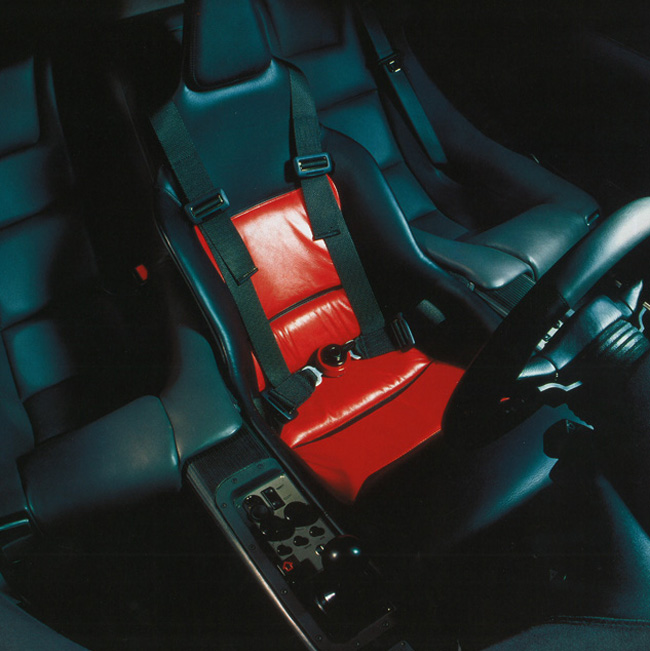
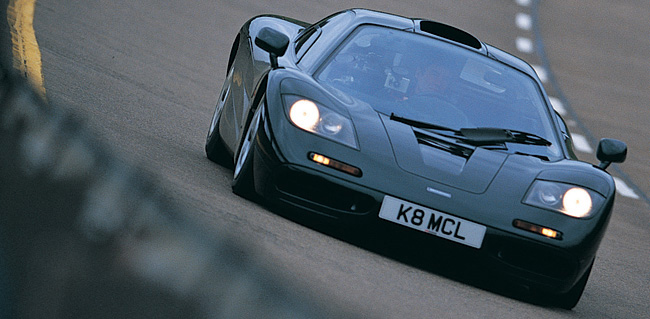
McLAREN F1 ROAD CAR - EQUIPMENT
- Full cabin air conditioning
- SeKurit electric defrost/ demist windscreen and side glass
- Electric window lifts
- Remote central locking
- Kenwood CD stereo system
- Cabin access release for opening panels
- Tailored document case
- Cabin stowage department
- Four lamp high performance headlight system
- Rear fog and reversing lights
- Courtesy lights in all compartments
- Map reading lights
- Remote battery charging point
- Facom titanium tool kit
- External battery charger
- McLaren F1 owner/drivers handbook
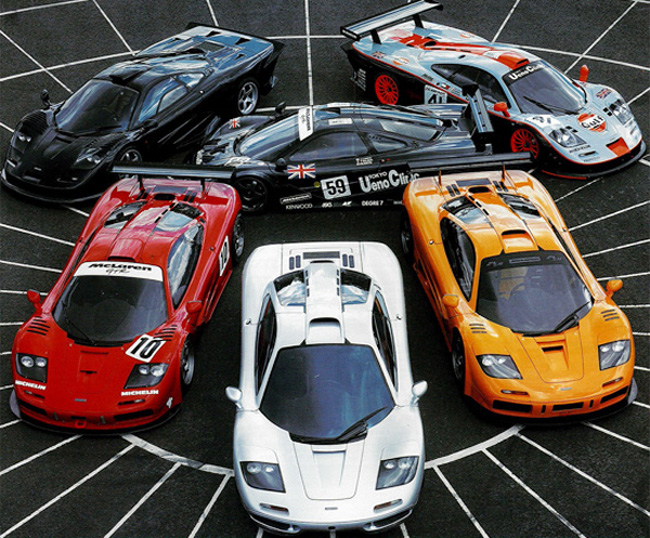
McLAREN F1 ROAD CAR - TRACK RECORD
The McLaren F1 set three incredible speed records on its way to making automotive history as the finest road car every produced. On March 31,
1998, the McLaren F1 obliterated the production road car world speed record in XP5, achieving a new official top speed of 240.1mph/386.7kph at
Germany's VW Ehra-Lessien proving ground. Incredibly this was a record the F1 held for 7 years, until March 2005. On December 16th 1998 the same
McLaren F1, driven by Peter Taylor, an independent test and development engineer broke the high-speed circuit record at MIRA averaging 168mph
round the 2.82 mile banked circuit with a maximum speed of 196.2mph. In March 1999 BBC's Top Gear, in conjunction with McLaren Automotive, set a
new UK closed circuit record in aid of the Comic Relief charity. Driven by Tiff Needell XP5 once again sensationally set the fastest lap record of a
British circuit averaging 195.3mph round the 2-mile banked circuit at Millbrook Proving Ground in Bedfordshire.
McLAREN F1 ROAD CAR - SPECIFICATION
Performance
Top Speed 386/240.1 km/h / mph
0-60 3.2 s
0-100 6.3 s
0-150 12.8 s
0-200 28 s
1/4 mile 11.1 s
@ 222 / 138 km/h / mph
Standing km 19.6 s
@ 285 / 177 km/h / mph
Powertrain
Type Number S 70/2
Cylinder Arrangement V12
Cylinder Angle 60 degrees
Power Output 461 / 627 kW / PS @ 7500 rpm
Max. Torque 651 / 480 Nm / lb.ft @ 5600 rpm
Engine Capacity 6064 / 369.9 cc / in 3 Valves/Cylinder 4
Bore 86.0 / 3.38 mm / inches
Stroke 87.0 / 3.42 mm / inches
Compression Ratio 11.0:1
Ignition system Transistorised system with twelve individual coils
Induction system 12 single throttle valves, carbon composite airbox
Valvetrain Chain driven double overhead camshaft with continuosly variable inlet valve timing.
Engine Block Cast aluminium 60 deg V12
Cylinder heads 4 valves per cylinder cast aluminium alloy
Flywheel Aluminium
Cam Carriers/Covers Cast magnesium
Lubrication System Dry sump magnesium casting with scavenge pumps and one pressure pump
Fuel 95-98 RON unleaded
Oil 5W40/10W60
Cooling System Twin aluminium water radiators and oil/water heat exchanger.
Fuel system Flexible safety fuel cell with in-tank high pressure pump
Electrics 12V system with high capacity battery & 160 amp alternator;Chassis ECU, Engine ECU, DC/DC converter for heated glass
Transmission Transverse unit with high speed bevel gears and spur final drive
All synchro constant mesh 6 Speed
Limited slip differential
Fan assisted air / oil radiator - pumped lubrication system
1st Gear Ratio 3.23/8.7
2nd Gear Ratio 2.19/12.7
3rd Gear Ratio 1.71/16.7
4th Gear Ratio 1.39/20.0
5th Gear Ratio 1.16/24.0
6th Gear Ratio 0.93/30.0
Final Drive Ratio 2.37:1
Clutch Triple plate Carbon/Carbon
200mm (7.87") diameter
Remote actuation (hydraulic)
Steering Unassisted rack and pinion
Two turns lock to lock
Chassis
Front Suspension Double wishbones, Ground Plane shear Centre sub-frames, light alloy dampers/ co-axial coil springs, anti-roll bar
Rear Suspension Double wishbones, inclined Axis Shear mounting system, light alloy dampers/ co-axial coil springs, toe-in / toe-out control links
Front Tyre 235/45 ZR 17
Front Wheel 9 x 17 inches
Rear Tyre 315/45 ZR 17
Rear Wheel 11.5 x 17 inches
Front Calliper Type 4 pot monobloc light alloy calliper
Rear Calliper Type 4 pot monobloc light alloy calliper
Front Brake disc Type ventilated
Rear Brake disc Type ventilated
Front Brake Disc diameter 332 / 13.07 mm / inches
Rear Brake Disc diameter 305 / 12 mm / inches
Front Brake Disc Thickness 32 / 1.26 mm / inches
Rear Brake Disc Thickness 26 / 1.02 mm / inches
Turns Lock-to-Lock 2
Parking Brake Automatic computerised control system
Brake Cooling Automatic computerised control system
Turning Circle 13 / 42.7 m / ft
Body
Length 4287 / 168.78 mm / inches
Width 1820 / 71.65 mm / inches
Height 1140 / 44.88 mm / inches
Wheelbase 2718 / 107.01 mm / inches
Front Overhang 970 / 38.18 mm / inches
Rear Overhang 599 / 23.58 mm / inches
Front Track 1568 / 61.73 mm / inches
Rear Track 1472 / 57.95 mm / inches
Luggage Capacity - 2 occupants (VDA) 283 / 10 litres / cu ft.
Luggage Capacity - 3 occupants (VDA) 227 / 8 litres / cu ft.
Fuel Tank Capacity 90 litres
Kerb Weight 1140 / 2513 kg / lbs
Weight Distribution 41.2/58.8 F/R
Drag Coefficient 0.32
Aerodynamics Full underbody air management (fan assisted). Driver selectable high downforce mode. Automatic brake and balance aerofoil system.
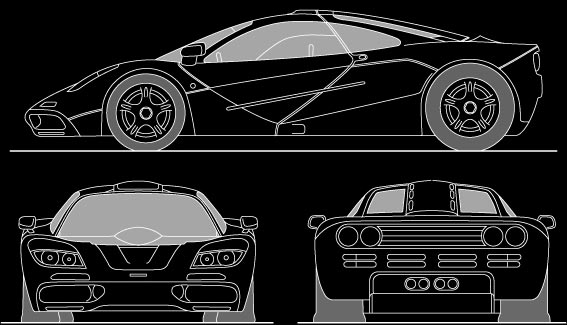
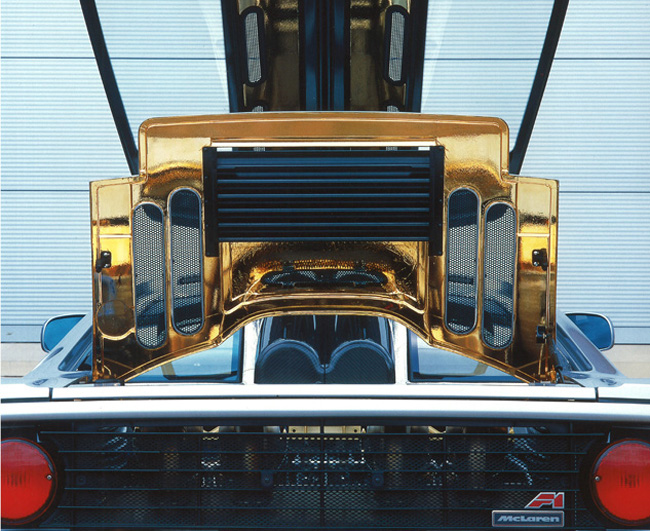
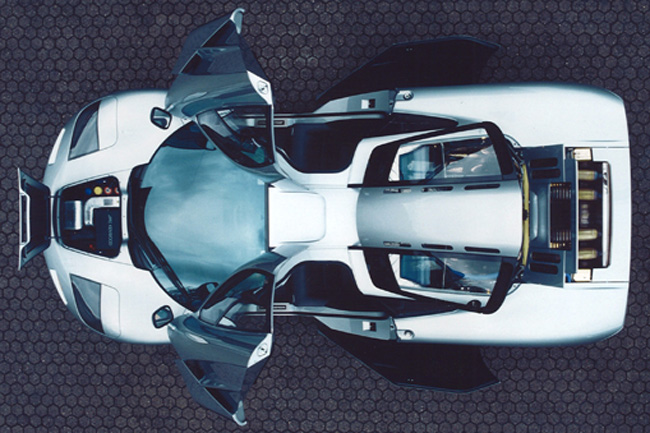
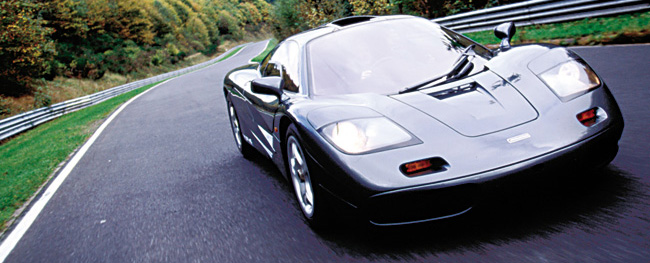
|








